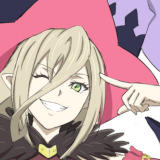Color Theory and You: Color Schemes and Original Characters · 8:33pm May 8th, 2016
I've seen (and read about) a lot of Original Characters with horrible color schemes. Really horrible. So for today's blog post, I thought we might discuss something that is often neglected in character design: color theory.
If you have ever taken any art class, you probably know what a color wheel is. If not, it's basically an artistic tool that shows the relationships between different colors. The first points on a color wheel are the primary colors: the three colors that you use to mix other colors. In between those are secondary colors: colors created by mixing two primaries (like how orange is a mixture of red and yellow). You also have tertiary and quaternary colors, which are made using three or four colors (or colors in different quantities). More advanced color wheels also change shades as you go from the center to the edge of the wheel, but you get the idea.
This is a very useful tool for designing characters, because the color scheme is often the first detail about your character that the audience notices (though this can vary in prose, of course).
Ponies generally have two major color components: their mane and their coat. Their eyes tend to match one of those two components. Their mane may have highlights or stripes in it, and their cutie mark can vary a lot, but those are the two major ones.
So how do you pick a set of colors using a color wheel? This is where color theory comes in: there are a number of different schemes and rules that can be used to find colors that work well together by using a color wheel. Some of them include:
* Complementary: colors that are on opposite sides of a color wheel.
* Analogous: colors that are adjacent to each other.
* Triad: one color, and the two colors adjacent to its complement (forming a triangle).
* Monochromatic: multiple shades of the same color.
So what does this look like? You can actually see these color theories at work in the show itself. Twilight and Pinkie Pie use a monochromatic scheme (purple and pink, respectively), with light accents from other colors. Applejack is analogous (green eyes, orange coat, yellow mane). Fluttershy is triadic (yellow coat, pink mane, blue eyes). Rarity and Rainbow Dash don't quite fit into any of these schemes, but that's because achromatic colors (white, black, gray) and polychromatic colors (rainbows) follow some different rules.
Some links you might find helpful:
Online color wheel (it even includes presets for different color arrangements, and lets you input colors from their hex values)
The Wikipedia articles on Color wheel and Color scheme
On the occasions I use OCs, I actually do base their colors on these rules and formulas. Even in prose, where aesthetics and visuals can (and often should) be left up to the reader, using deliberate color schemes can help give your characters a bit more identity. Avoiding garish color schemes also prevents your characters from being unintentionally silly.
Even though this post only covered the basics, hopefully it was helpful. As always, comments and criticism are welcome.



Thanks for another A-100 post, Clever.
That and always remember Black and red alicorns are NEVER in season
Honestly, I feel like taking your cues from the show is best - if your OC would stand out in a scene with the mane six, you're doing it wrong. It might look cool, but a bionic red and teal zebra-corn is going to attract derision because the look of the character will overpower their personality.
3931085 I would agree to a point. As mentioned in the post, some characters in the show do display color theory principles. Mimicking a tv show that has to make concessions to budget, however, isn't always the best. The show has some garish/bland background ponies and awkwardly designed one-shot characters.
Taking cues from the show is usually good. The show is hardly perfect, though.